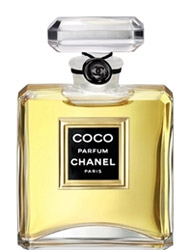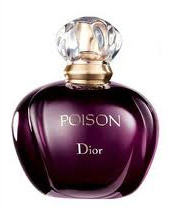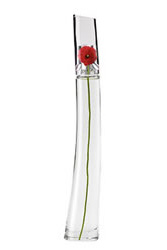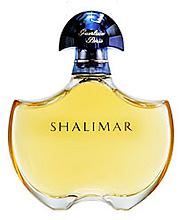Chanel Coco is resting near the top of my favorite Chanel perfumes list. This fragrance couldn’t be any further from its younger incarnation, the pink and bubbly Coco Mademoiselle.
In Bottle: Add in spice for warm, a wispy thread of flowers, and a delicately peeled citrus note. Coco smells warm right off the bat with a bit of citrus to clean it up.
Applied: Coco wastes no time just digging into this. It comes off spicy right away, throwing cinnamon and clove at you to warm itself up as the citrus and wispy flowers quickly give way to the midstage where we’re greeted with a delightfully clean, spicy, warm jasmine and rose complex. A lot of perfumes rely on jasmine and rose together but that never seems to make the combination any less beautiful–particularly when it’s used in such a fine tuned balanced such as in Coco. There is the smallest drop of civet in this during the later half of the midstage. The civet in Coco is so well done and well balanced. I don’t normally like it in perfumes but this civet blends really well with the overarching spicy cleanness that the note adds a depth and sensual feel to the fragrance without making it smell too harsh and alienating. The dry down is an equally spicy amber with a hint of sandalwood and a smooth layer of tonka.
Extra: Chanel Coco was released in 1984 and was composed by Chanel’s in house perfumer, Jacques Polge. It is a little sad to see that when you do a search for “Chanel Coco”, most of the results come back for Coco Mademoiselle.
Design: Like most of Chanel’s other widely popular fragrances, Coco comes in various packaging. If you go for the full service parfum concentration deal you get a glass rectangular bottle so often associated with No. 5. Coco’s bottle has a black seal band running around the neck and a black label.
Fragrance Family: Spicy Oriental
Notes: Angelica, mimosa, frangipani, mandarin, cascarilla, orange flower, Bulgarian rose, jasmine, labdanum, ambrette seed, opopanax, benzoin, tonka, vanilla.
Like with most Chanel fragrances, Coco lasts a very long, very impressive time. She’s a sophisticated lady and entirely wearable considering the era it came out in.
Reviewed in This Post: Coco, 2009, Eau de Parfum.







